Everything’s bigger in Texas—including the possibilities for your backyard pool. With long summers and mild shoulder seasons, Texans get more swim days than most—which makes a pool less of a luxury and more of a lifestyle staple. If you’re exploring fiberglass pool cost in Texas, knowing how location, landscape, and lifestyle shape your final investment is essential. From the rocky terrain of the Hill Country to the clay-heavy soils of East Texas, excavation and site prep needs can vary widely across the state. In cities like Austin, Dallas, and Houston, tighter lot sizes or overhead obstructions may require specialized equipment, while homeowners in areas like Waco, Midland, or the Gulf Coast often enjoy more open space and layout flexibility.
Personalizations like smart automation, deck jets, a spillover spa, or custom premium decking help make the most of homeowners’ outdoor space, but the add-ons also add to the total pool cost. Each Texas municipality may have unique pool permitting rules, fencing laws, or HOA guidelines that can affect your timeline and budget. There is a lot to cost-compare, plan, and think about. Partnering with an experienced local fiberglass pool professional will help you navigate the details and design a pool that brings beauty, functionality, and lasting value to your Texas home.
What is the Average Cost of a Texas Fiberglass Pool Installation? Survey Says…
Through a 2025 survey of our independent dealers across Texas, Thursday Pools has gathered valuable data to help you estimate the average cost of installing a fiberglass pool in the Lone Star State. If you’re just starting your research into fiberglass pool costs in your area, you’re in the right place.
AVERAGE TEXAS FIBERGLASS POOL INSTALLATION BY SIZE |
|||
|---|---|---|---|
| Pool Type | Small Fiberglass Pools | Medium Fiberglass Pools | Large Fiberglass Pools |
| Size Range | Up to 26 ft Long or 400 ft² | 26 to 34 ft Long or 400 to 600 ft² | 35 ft and Longer or 600+ ft² |
| Average Cost | $70,000 | $100,000 | $120,000 |
While this data provides a great starting point, remember—every backyard is different. Soil conditions, access, layout, and desired pool features each influence your final price. For the most precise picture of what your dream pool might cost, reach out to a trusted Thursday Pools dealer in your area.
Average Cost of Popular Pool Models Installed in Texas
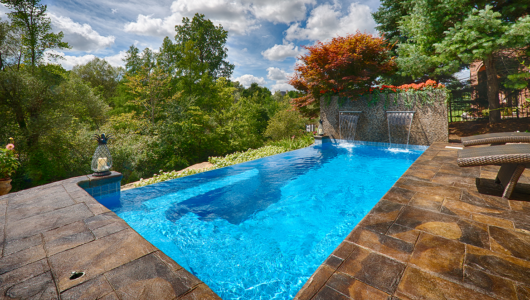
SEA TURTLE (9.5’ x 19.5’)
The Sea Turtle is a compact powerhouse for Texas homeowners with smaller spaces or an eye for efficiency. At just less than 20 feet long, this small fiberglass pool fits perfectly into urban lots in places like Austin or Plano without compromising on style or comfort. It includes wide entry steps and built-in benches inviting conversation and cooling off—ideal for unwinding after a long day or providing younger swimmers a safe space to splash. The Sea Turtle’s flat-bottom design makes it a versatile choice for exercise and fun, proving that good things come in smaller footprints.
According to our 2025 survey of Thursday Pools dealers in Texas, the average cost for a standard installation of a Sea Turtle or similar fiberglass pool model under 26 feet long or approximately 400 square feet is $70,000.

SUN DAY (15’ x 30’)
The Sun Day is tailor-made for laid-back entertaining and seamless integration into suburban backyards from The Woodlands to San Antonio. Its gentle curves, wraparound benches, and swim-out sun shelf create a space that’s equal parts social hub and serene retreat. Whether you’re floating under the stars or gathering with friends for an afternoon barbecue, this mid-size fiberglass pool turns any backyard into a resort-inspired haven. A wide landing pad and deep-end courtesy ledge round out the comfort and safety features, giving swimmers of all ages room to relax and play.
Based on dealer survey feedback, the average cost for standard installation of the Sun Day or other medium designs between 26 and 34 feet long or 400 to 600 square feet is $100,000.
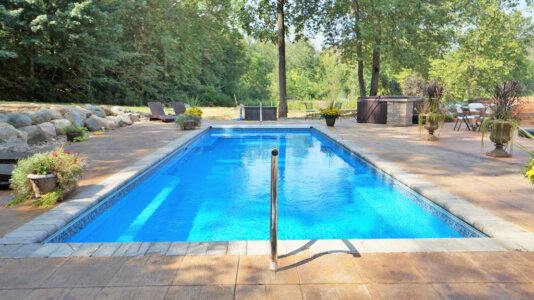
SPIRIT (13.5’ x 40’)
The Spirit from Thursday Pools offers something for everyone. The spacious and versatile pool features a fully integrated spa with a spillway, providing a luxurious relaxation space. It also includes a generous tanning ledge, an additional conversation area with entry steps and wraparound benches, and a flat-bottom swim lane, perfect for swimming laps or simply enjoying the water.
The Spirit and other larger designs 40 feet or longer are ideal for spacious or rural yards. In Texas, the average cost for a standard installation of these large fiberglass pool models is approximately $120,000.
Assessing Your Texas Property for Pool Installation
Texas’ varied landscape means that soil conditions can differ significantly from one property to another. For example, areas like Hill Country or West Texas may have rocky or caliche-rich soil, requiring specialized equipment and additional labor, increasing excavation costs. Areas with sandy soils, such as parts of South Texas, may need extra reinforcement to prevent the pool from shifting over time.
The natural slopes of your yard can also affect the installation process. Homes on hilly terrain may require additional grading or retaining walls to create a stable, level surface for the pool and surrounding deck. In more urban or suburban areas, where space is often more limited, accessibility can pose challenges. Narrow streets, tight driveways, or fenced-in lots may require crane rentals or special accommodations to deliver and install a one-piece fiberglass pool shell. Working with a local pool professional will help you navigate these unique challenges.
| AVERAGE ADDITIONAL YARD-RELATED EXPENSES IN TEXAS
|
|
| Excavating Sandy Soil | $3,700 |
| Excavating Clay Soil | $1,300 |
| Excavating Rocky Soil | $4,250 |
| Above-Average Slope Requiring Extra Grading | $6,200 |
| Limited Yard Access | $5,800 |
Understanding Pool Barrier Safety Regulations in Texas
When installing a fiberglass pool in Texas, it’s essential to understand the safety regulations and requirements for pool barriers. While the Texas Department of Health and Human Services doesn’t directly regulate private residential pools, homeowners must comply with the state’s building codes and local ordinances regarding pool enclosures.
Under Texas law, a barrier at least 48 inches high must enclose all residential pools. The bottom of the barrier should not exceed 2 inches above the ground to prevent small children or pets from slipping underneath.
In addition to state regulations, many Texas cities and counties have specific ordinances that may impose stricter rules. For example, in cities like Austin and San Antonio, pool gates must be self-closing and self-latching. The latch must be at least 54 inches above the ground and be on the pool-facing side of the gate for added security.
Since pool barrier requirements can differ from one municipality to another, consult with local professionals, city officials, and homeowners associations before beginning your installation.
For a 300-linear-foot fence, Texas homeowners can expect to pay an average of $8,950, according to estimates from our area dealers.
Enhance Your Fiberglass Pool with Popular Add-Ons in Texas
Upgrading your fiberglass pool with optional features and add-ons can transform your backyard into a paradise, offering a resort-style experience that suits your needs and preferences. While not essential, these enhancements can significantly improve convenience, aesthetics, and overall enjoyment for you and your family. Below, we’ve outlined some of the most sought-after upgrades by Texas homeowners and average pricing information based on our 2025 survey of Thursday Pools’ independent dealers across the state.
Pool Heating and Filtration Systems
Pool Heater Average Cost in Texas: $5,550
Keep your pool water comfortable, extending your swim season even as the evenings cool.
UV Filter System Average Cost in Texas: $4,400
Minimize chemical use and maintain crystal-clear water with a UV filtration system that eliminates bacteria and algae.
Automatic Pool Cleaning and Vacuuming System Average Cost in Texas: $5,150
Spend less time skimming and scrubbing with an automatic cleaning system that helps keep your pool clear and inviting.
Pool Automation and Smart Control System Average Cost in Texas: $6,200
Take control of your pool’s temperature, filtration, and lighting remotely from your smartphone or tablet, giving you convenience and control.
Pool Covers
Automatic Pool Cover Average Cost in Texas: $16,000
Improve pool safety, reduce water evaporation, and maintain a cleaner pool with an automatic cover that opens and closes with the push of a button.
Non-Automatic Safety Pool Cover Average Cost in Texas: $12,000
A more affordable safety cover option designed to keep debris out and provide peace of mind for pool owners.
Pool Decking and Landscaping
Poured-concrete patio (Approx. 1,200 sq. ft.) Average Cost in Texas: $11,650
A durable and cost-effective solution for poolside decking, concrete withstands Texas’ seasonal temperature shifts and provides a stable surface.
Paver Patio (Approx. 1,200 sq. ft.) Average Cost in Texas: $14,250
Create an elegant, slip-resistant deck with pavers, available in affordable concrete or premium natural stone like travertine. Brick and concrete pavers are ideal for Texas’ weather.
Surrounding Landscaping Average Cost in Texas: $5,000
Elevate the aesthetics of your pool area with decorative landscaping, including trees, shrubs, and vibrant flower beds.
Pool Features and Accents
Specialty Waterline Tile Average Cost in Texas: $9,300
Add a custom touch to your pool’s look with decorative tiles along the waterline, creating an upscale and polished appearance.
LED Pool Lights Average Cost in Texas: $1,819 per light
Enhance your pool’s ambiance at night with energy-efficient LED lights, available in white or multi-color options for dynamic effects.
Deck Jets Average Cost in Texas: $8,650 per jet
Add a dramatic flair to your pool with graceful arcs of water shooting from the deck into the pool.
Bubblers Average Cost in Texas: $1,100 per bubbler
Bubblers create small fountains in shallow pool areas, a playful and visually appealing addition that adds gentle water movement.
Cascading Waterfalls Average Cost in Texas: $6,600
Bring a spa-like ambiance to your pool with a natural-looking waterfall feature, offering a relaxing atmosphere.
Add-On Spa Average Cost in Texas: $16,000
Enhance your backyard oasis with an attached spa for a stunning spillover effect, providing a luxurious retreat alongside your pool.
Pool Slides and Diving Features
Simple Pool Slide Average Cost in Texas: $6,400
A classic, straightforward option brings some playful fun to your poolscape.
Deluxe Pool Slide Average Cost in Texas: $9,450
A taller, twistier slide goes above and beyond in adding excitement and flair.
Diving Board (Type 1 Diving Pools Only) Average Cost in Texas: $3,250
Diving boards are permitted only with certified Type 1 diving pools that meet the required slope and depth specifications. Use with caution and follow all safety guidelines.
*Thursday Pools strongly advises against pool slides and diving boards due to safety concerns. The inclusion of a diving board or slide with any fiberglass pool must be carefully reviewed by a licensed professional to ensure compliance with all local building codes, safety regulations, and manufacturer guidelines. Not all fiberglass pool models are suitable for diving or slide use. It is the responsibility of the homeowner and installer to ensure proper installation and usage. Always prioritize safety and consult a qualified expert before adding any diving or sliding feature to your pool.
Transform Your Texas Backyard with a Custom Fiberglass Pool
A fiberglass pool in Texas is more than just an investment—it’s an opportunity to create lasting memories, stay refreshed during the summer heat, and add long-term value to your home, whether you’re in the heart of the city or enjoying the peacefulness of rural Texas, choosing the right pool size, features, and installation plan is essential for making the most of your outdoor space.
Each pool installation is unique, so the best way to get an accurate estimate is by consulting with a local independent Thursday Pools dealer. They’ll evaluate your yard’s specific conditions, offer expert advice on excavation, access, and site prep, and guide you in selecting a pool design that aligns with your vision and budget.
Excited to get started? Use the Thursday Pools Pool Cost Calculator for pricing estimates, explore our Pool Selector Tool to find the perfect pool design, and book a consultation with a dealer near you. Your dream backyard is just a step away!
Get Your Personalized Estimate
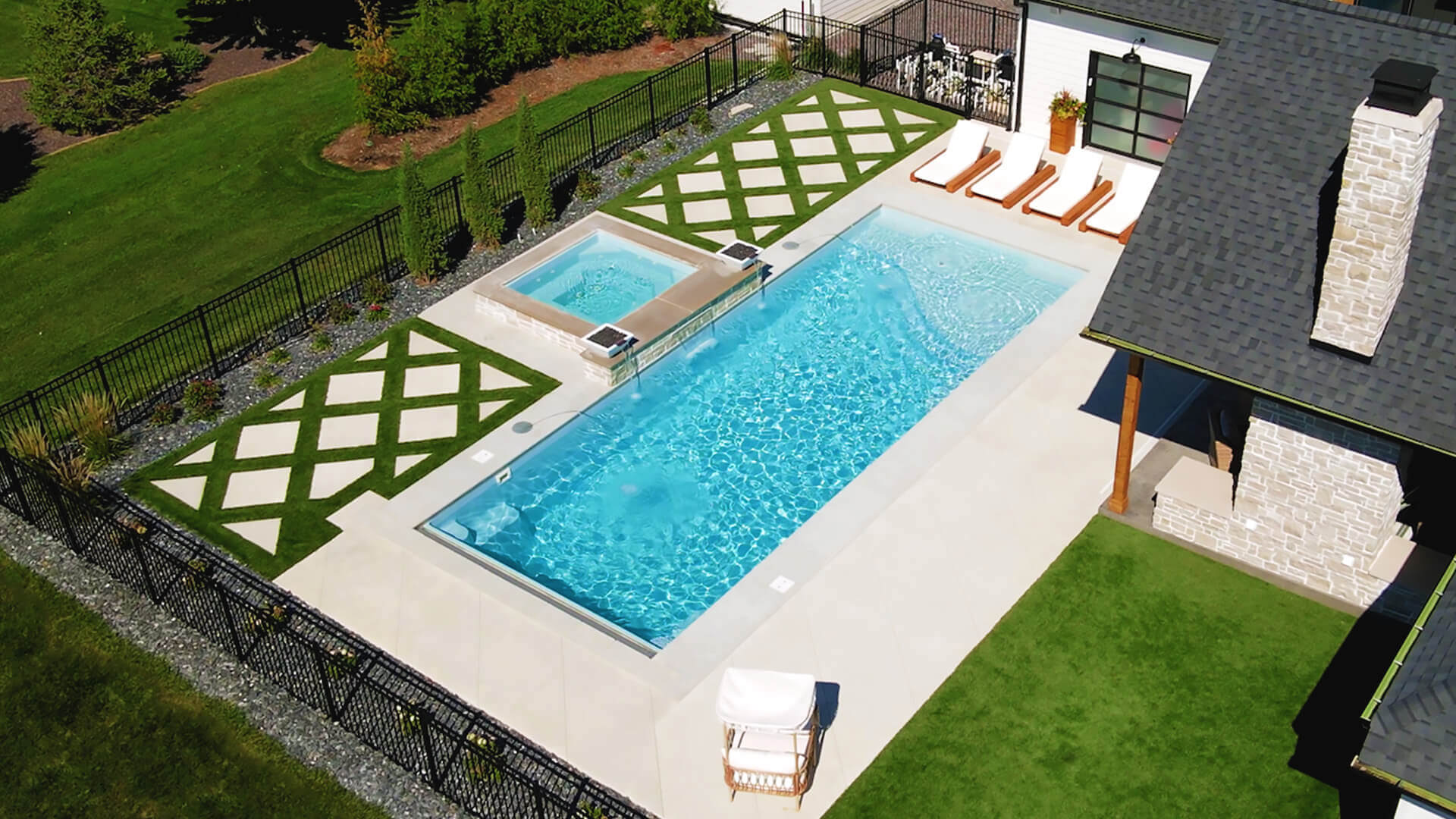
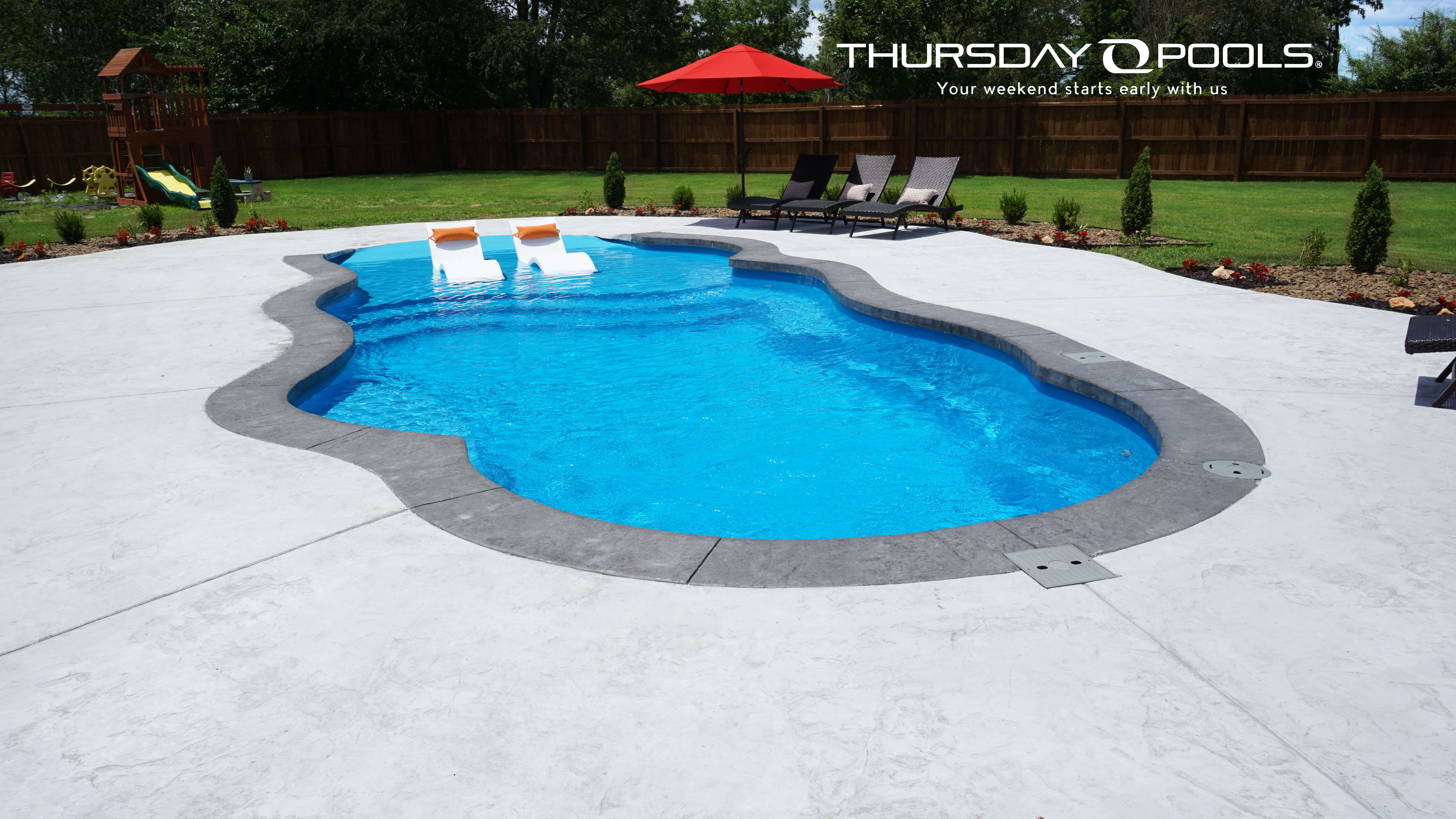
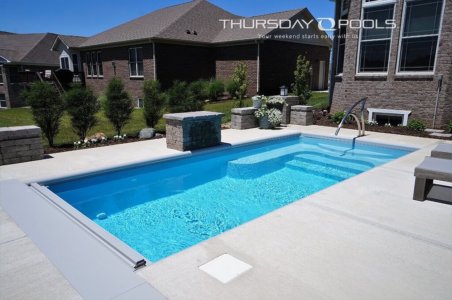
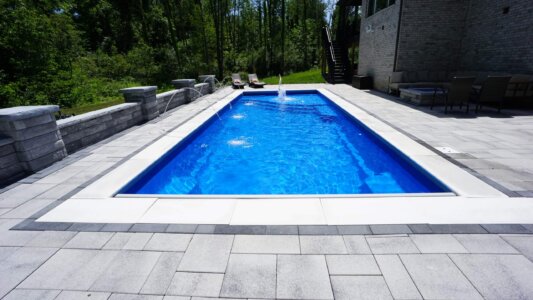
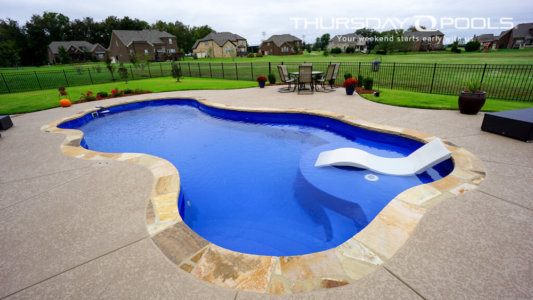
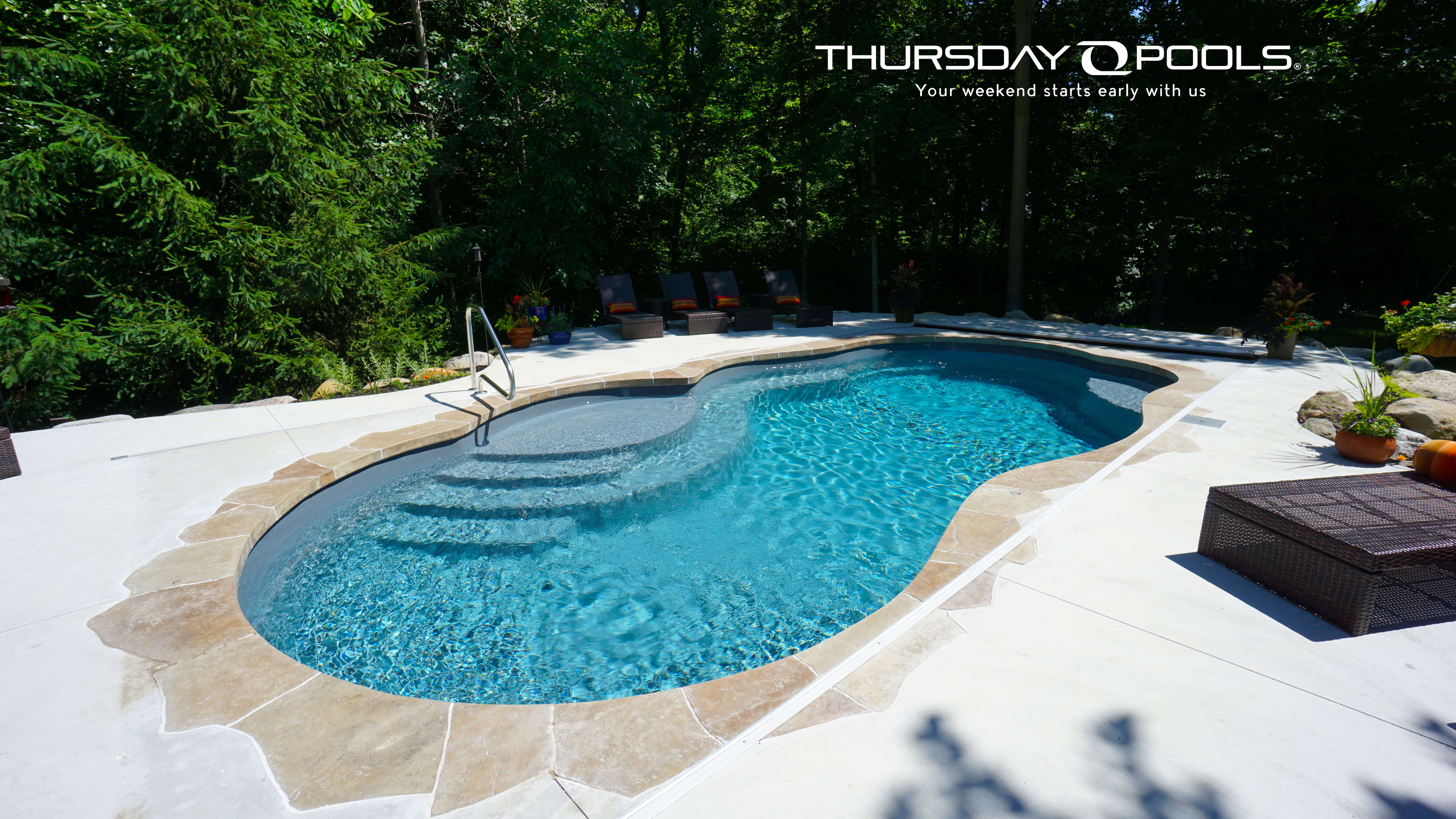
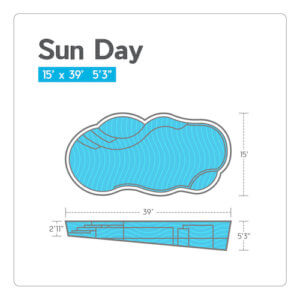
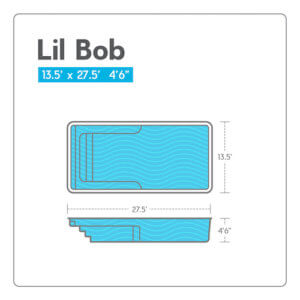
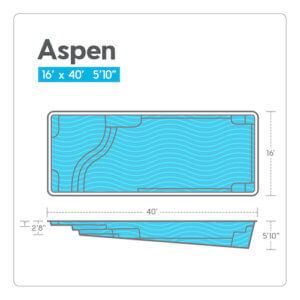
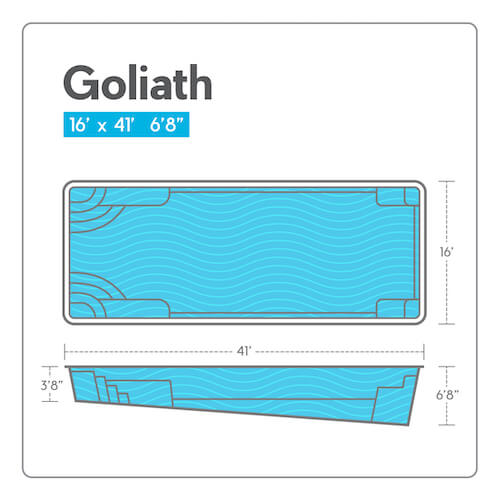
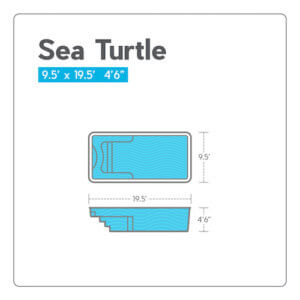
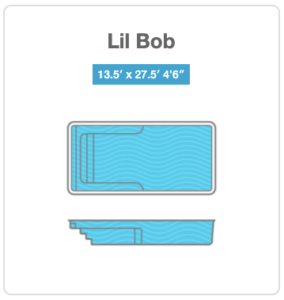
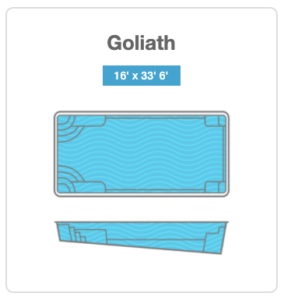
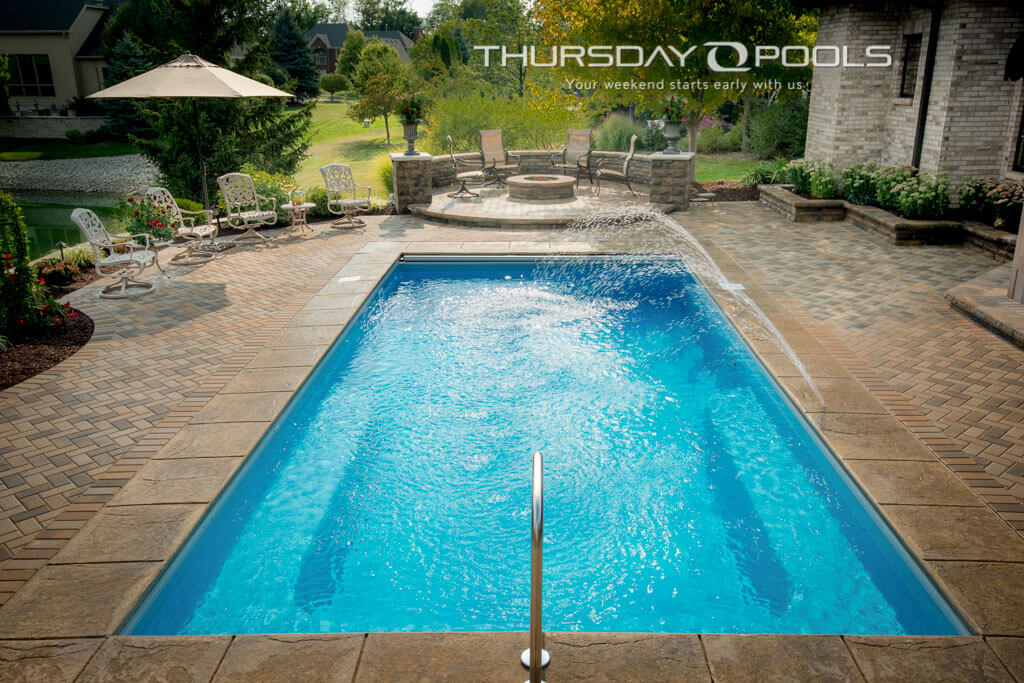
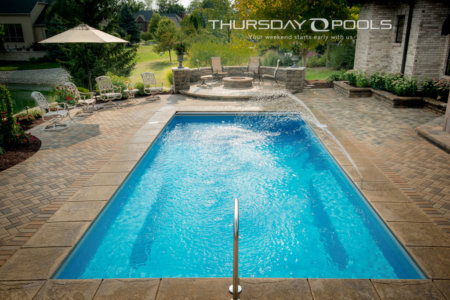 If so, you’re probably wondering, “How much do inground pools even cost?” Perhaps you’ve done a bit of research, but you’re finding that your search results are yielding a pretty wide range of costs, which can be frustrating. Why can’t you find more specific information? Because Googling “How much do inground pools cost?” is a bit like Googling “How much does a car cost?” That question can’t be answered until you know what make and model of car you’re getting, along with what features you need. And, when you get a new car, you also have to consider insurance, license, title charges, accessories and gas. None of these things will be a part of your initial car purchase, but they’ll affect your car budget nonetheless, and they’ll probably end up being more than you anticipated.
If so, you’re probably wondering, “How much do inground pools even cost?” Perhaps you’ve done a bit of research, but you’re finding that your search results are yielding a pretty wide range of costs, which can be frustrating. Why can’t you find more specific information? Because Googling “How much do inground pools cost?” is a bit like Googling “How much does a car cost?” That question can’t be answered until you know what make and model of car you’re getting, along with what features you need. And, when you get a new car, you also have to consider insurance, license, title charges, accessories and gas. None of these things will be a part of your initial car purchase, but they’ll affect your car budget nonetheless, and they’ll probably end up being more than you anticipated.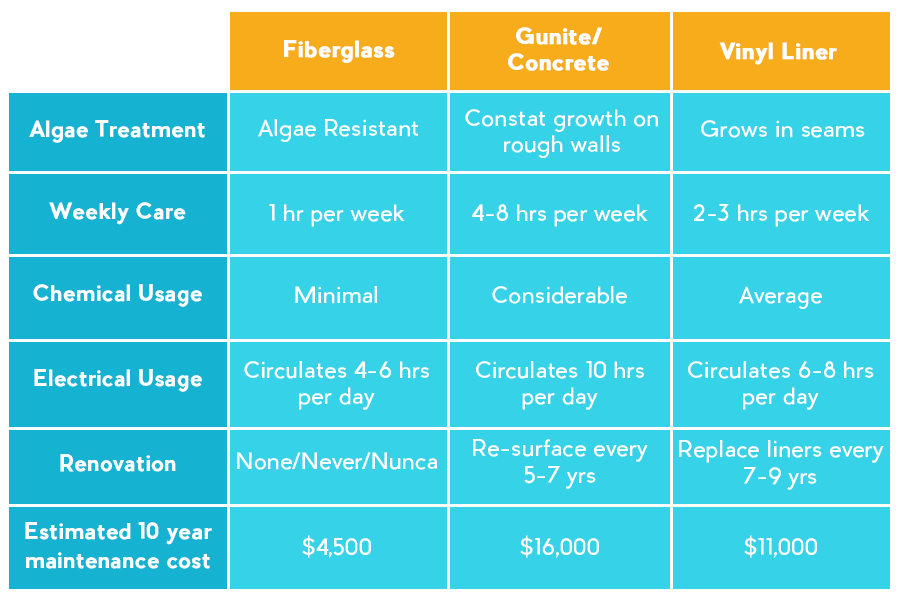
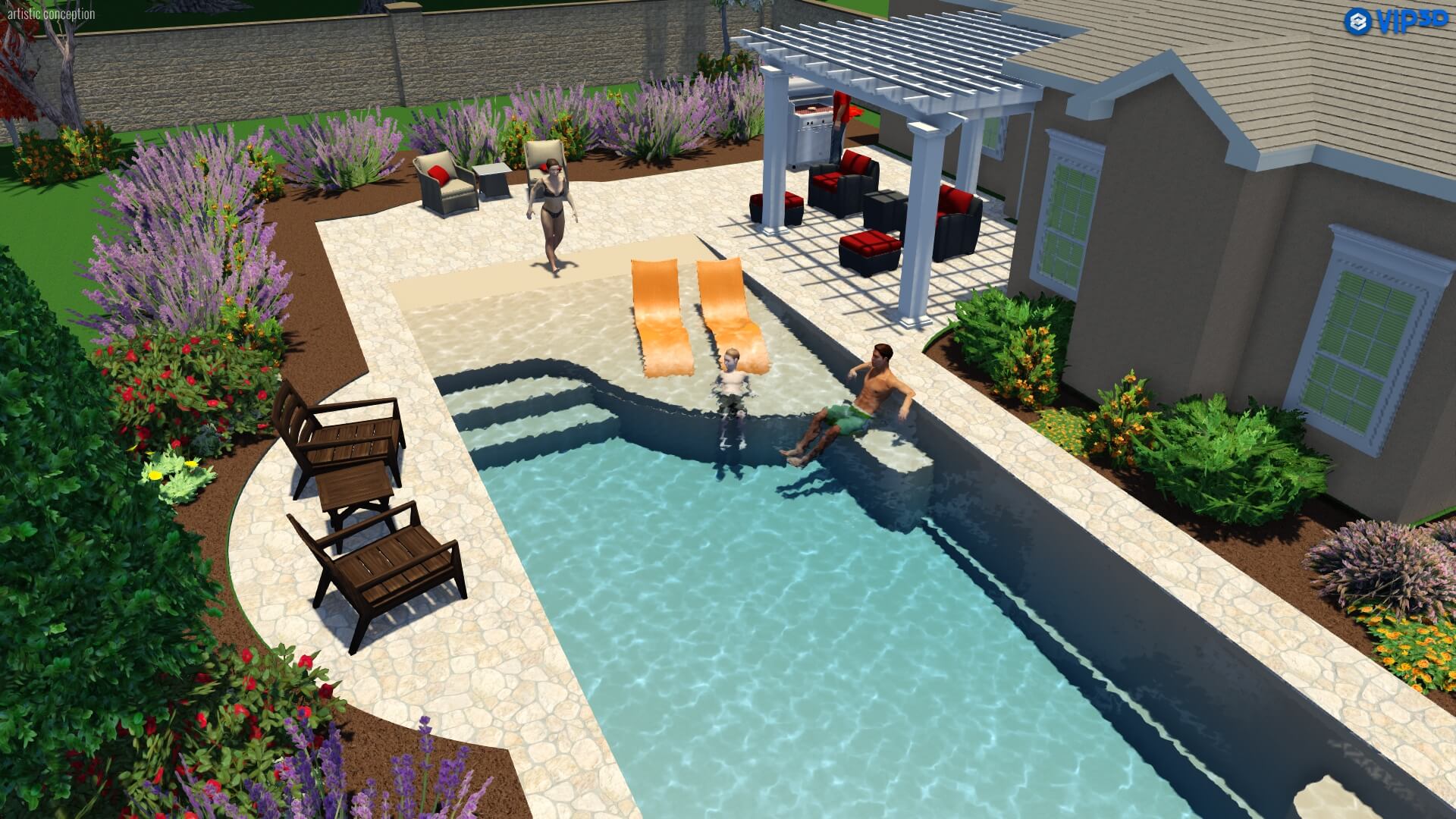
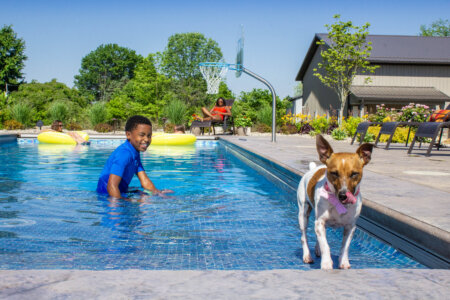
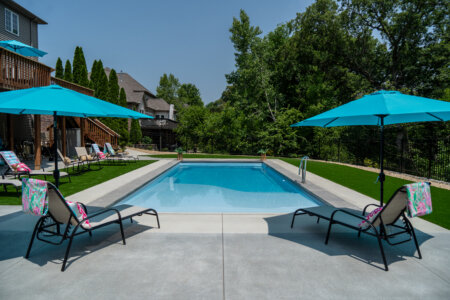
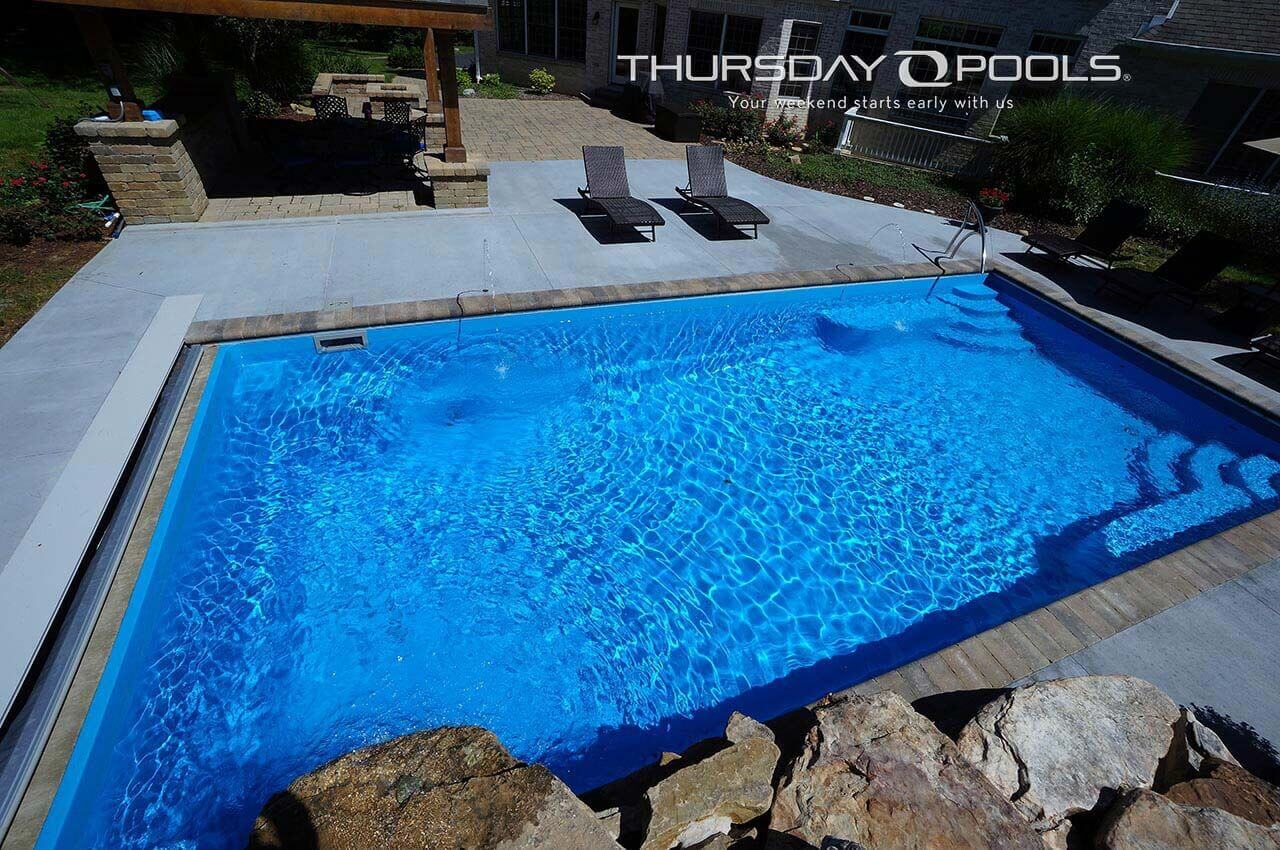
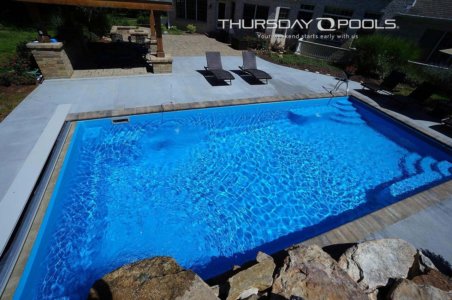
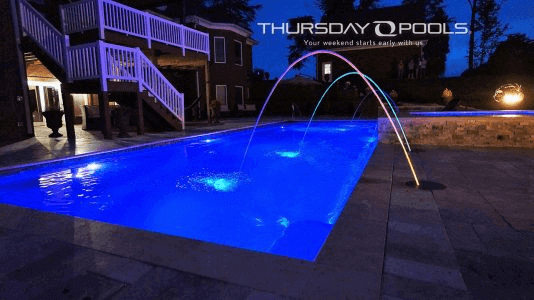
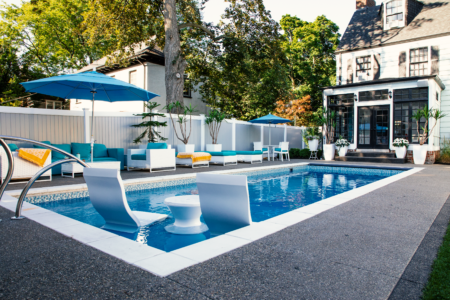
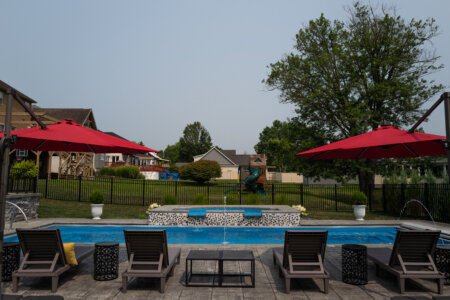
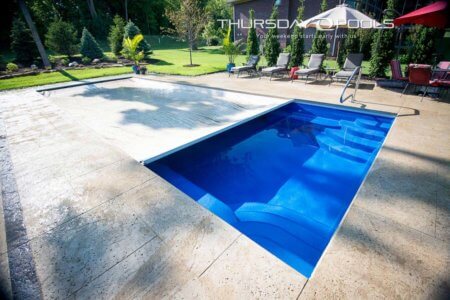
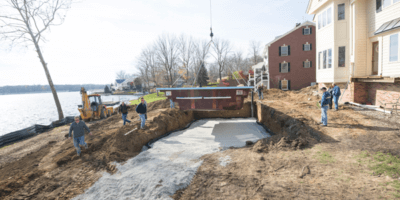
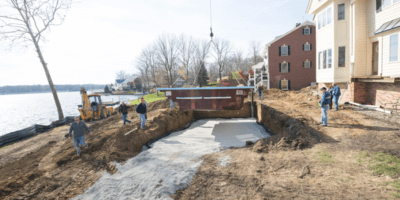

 Have you been looking out your window wishing there was a
Have you been looking out your window wishing there was a 
 Regardless of the option (or combination of options) you choose, the fact is that this time next year, you can look out your window and instead of saying, “Maybe next year,” you can say, “Get your suits on kids. Last one in’s a rotten egg!”
Regardless of the option (or combination of options) you choose, the fact is that this time next year, you can look out your window and instead of saying, “Maybe next year,” you can say, “Get your suits on kids. Last one in’s a rotten egg!”